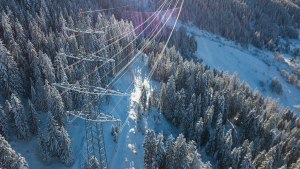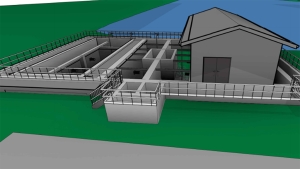ATCO Structures & Logistics is presently manufacturing a 50-person work camp for Eni Petroleum, to be erected on Alaska’s oil-rich North Slope.
CALGARY
ATCO Structures & Logistics is presently manufacturing a 50-person work camp for Eni Petroleum, to be erected on Alaska’s oil-rich North Slope.
The contract calls for a two-storey dormitory complex with an additional building to be used for camp services and recreational facilities.
When completed, the complex will include bedrooms, bathrooms, kitchen, dining room, exercise room, lounge and offices.
The build and erection project follows on the heels of a 78-person camp ATCO built and erected over the past year for the Pogo gold mine located southeast of Fairbanks.
But, building modular units in Canada and erecting them in Alaska is nothing new for ATCO. The company has been supplying workforce housing and modular buildings to Alasak since the late 1960s.
Brent Morgan, ATCO Structures & Logistics executive vicepresident of workforce housing and space rentals said the company has two U.S. manufacturing facilities — one north of Houston and another north of Dallas.
As such, it is quite rare for the company to build product for the American market in Canada, with the sole exception being Alaska.
Although the company has nine offices in Western Canada, it operates only two manufacturing facilities — Calgary and Spruce Grove — both in Alberta.
The former handles larger projects, like those erected in Alaska.
The latter acts as a service centre and overflow manufacturing facility, specializing in smaller projects, including classroom portables and office unit projects up to three modular units in size.
Staffing at the Calgary manufacturing plant typically ranges between 100 to 200 workers, who can turn out one of the company’s 49-person camp complexes in about three weeks.
Each of the complex’s eight units takes one to three days each to build.
But where any given project is manufactured doesn’t always depend on the geographical proximity to the erection site.
“Sometimes our costs of manufacturing are cheaper at a certain plant for certain product lines,” Morgan said.
“And so typically we would look at the price points of the various manufacturing facilities and determine which ones made the most sense economically, and then it could be schedule driven as well.”
Although ATCO’s units are all manufactured in -house, each project is unique in meeting client needs and local building codes.
“There’s codes that are specific to not only provinces or states, but actually municipalities that have their own regulations,” said Bill Haliburton, ATCO’s vice president of manufacturing for Canada and the U.S.
But building codes are not the only regulations the company is faced with on the long road from their Canadian manufacturing facilities to Alaska’s North Slope. Transporting the units also has to follow strict guidelines that vary on both sides of the border.
ATCO faces different regulations on both sides of the border for the transportation of its modular units.
“There’s certain regulations from province to province and obviously, going up into Alaska where there’s restrictions on all dimensions — length, width and height,” Haliburton said.
He added that there is an additional ladder of differing regulations for the pilot cars used to guide the oversized loads.
“At certain heights you need to have utilities brought out to move wires, and then in certain locations, bridges,” he said.
The manufacturing VP said module dimensions relative to the erection site are a significant consideration, when it comes to hoisting the units, which can weigh up to 60,000 pounds, in place.
“We have engineering calculations as far as unit weight, which determines the crane size,” Haliburton said, adding that location and access to the footprint also plays a role in determining what type of crane is needed and how far away it needs to be to erect the second and third storeys.
When working in Alaska, ATCO puts its crane service requirements out to competitive bid.
However, it uses a mixture of in-house and subcontract work for the rest of the erection and installation process.










Recent Comments
comments for this post are closed